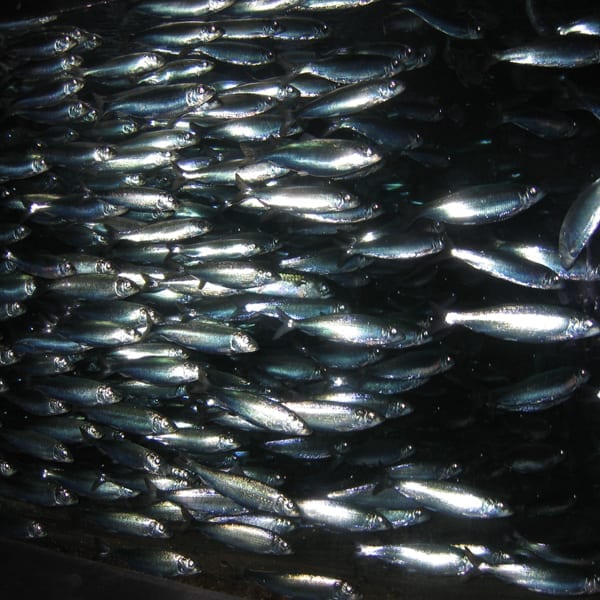The fats of life
Drowning in a deluge of information about omega-3 fatty acids? Helen Renshaw asks whether claims made about this nutrient are justified or if something fishy is going on.

If an award existed for nutrient of the year, that honour would surely go to omega-3, the essential fatty acids found in oily fish that have recently grabbed more headlines than Gordon Ramsay. But anyone following the flood of omega-3 reports could be forgiven for feeling all at sea.
Most of the headlines have been glowing, crediting omega-3 with an array of health benefits, including protection against heart disease and cancer, and boosting children’s concentration. Supermarkets are crammed with omega-3-enriched foodstuffs and sales of fish oil supplements have rocketed.
But it hasn’t all been good news. Some reports have proved contradictory, and one (a review of 89 studies into the health effects of omega-3 by the University Of East Anglia) found no evidence of health benefits of any kind. So what on earth is going on?
“There’s been a lot of ridiculous hype and misinformation about omega-3, so it’s hardly surprising that the general public is confused,” says renowned naturopath and nutritional consultant Michael van Straten, author of The Omega 3 Cookbook. “But the vast bulk of evidence shows that omega-3 (especially the type found in oily fish) is essential for good health.”
So, we’ve waded through the evidence to get to the bottom of the omega-3 story.
What are essential fatty acids?
Essential fatty acids are found in polyunsaturated fats, which comprise two groups: omega-3 and omega-6. These nutrients cannot be manufactured within the body – we rely on dietary sources. Oily fish, fish oils and some vegetables oils are the best sources of omega-3. However, modern diets are deficient in the type of omega-3 found in oily fish and fish oils (long-chain), whereas we tend to get enough short-chain omega-3, which exists in vegetable oils. Omega-6 is in most vegetable oils but you don’t need a lot and too much may be harmful.
Why is omega-3 so important?
Research into the health benefits of omega-3 began in the 1970s, when it was discovered that the Inuits of Greenland, who lived on a diet high in omega-3-rich oily fish, had a significantly reduced risk of developing illnesses such as heart disease. Since then, further research has linked omega-3 with lowering cholesterol, easing menstrual pain, reducing blood pressure and improving symptoms of rheumatoid arthritis. Studies in recent years have focused on the effect of omega-3 on the brain, and particularly how eating oily fish or taking a fish oil supplement can help a child’s brain development.
How much should I eat?
Nutritional advice varies but it’s generally a good idea to aim for 500mg of omega-3 a day. Such are the potential health benefits, however, that Michael van Straten, recommends a daily intake of around 1g.
How can I get my 1g a day?
“The best way to get omega-3 is in oily fish such as mackerel, salmon, sprats, sardines, herrings and eels,” says van Straten. “They are so rich in omega-3 that three portions a week should be enough.” Girls and women of child-bearing age should eat no more than two portions a week, according to the Food Standards Agency.
What if I don’t like oily fish?
Oily fish is by far the richest source of omega-3 but nuts, seeds, and some oils (especially flaxseed, walnut and rapeseed) provide useful quantities, as does lean fish, organic meat and organic milk.
What about supplements?
“Supplements do have a place but look out for DHA and EPA on the label, as this indicates the tablets contain long-chain omega-3,” says van Straten.
What about omega-3 fortified foods?
“I’m not a lover of fortified foods, as we don’t know the long-term effects yet,” says van Straten. “Many [omega-3 fortified foods are created] by changing livestock diets. We also don’t know whether these omega-3-enriched animal feeds contain long-chain or short-chain fatty acids. My guess is that they’re short-chain, otherwise the products would taste strongly of fish.
What about cod liver oil?
Cod liver oil alone is not the answer. It does contain long-chain omega-3 but not as much as is found in the flesh of oily fish.
Doesn’t oily fish contain pollutants?
Concern has been raised about chemicals in fish from polluted waters. But research suggests the level is similar to that in beef, pork, eggs, chicken and butter. Overall, experts believe the benefits of eating oily fish far outweigh any potential health risks.
What fish is ‘oily’ fish?
Anchovies
Carp
Eel
Herring
Kippers
Pilchards
Mackerel
Salmon
Sardines
Sprats
Swordfish
Trout
(fresh, not canned)
Whitebait
Subscribe to our magazine
Food stories, skills and tested recipes, straight to your door... Enjoy 5 issues for just £5 with our special introductory offer.
Subscribe
Unleash your inner chef
Looking for inspiration? Receive the latest recipes with our newsletter